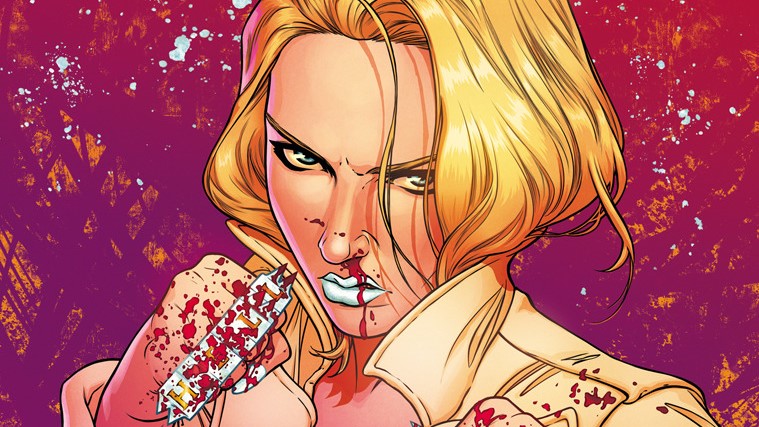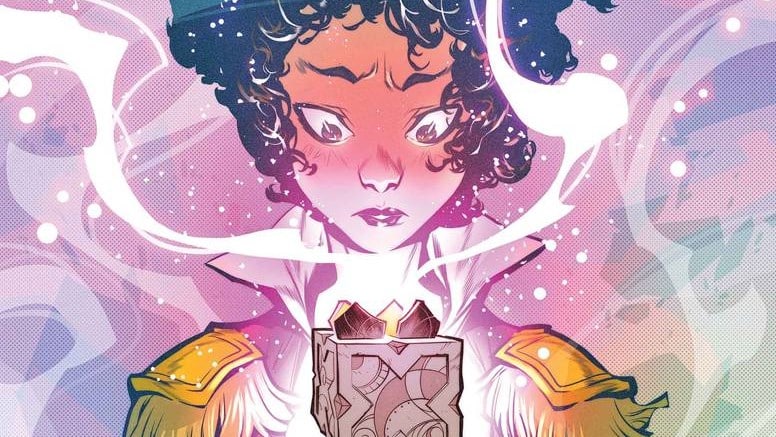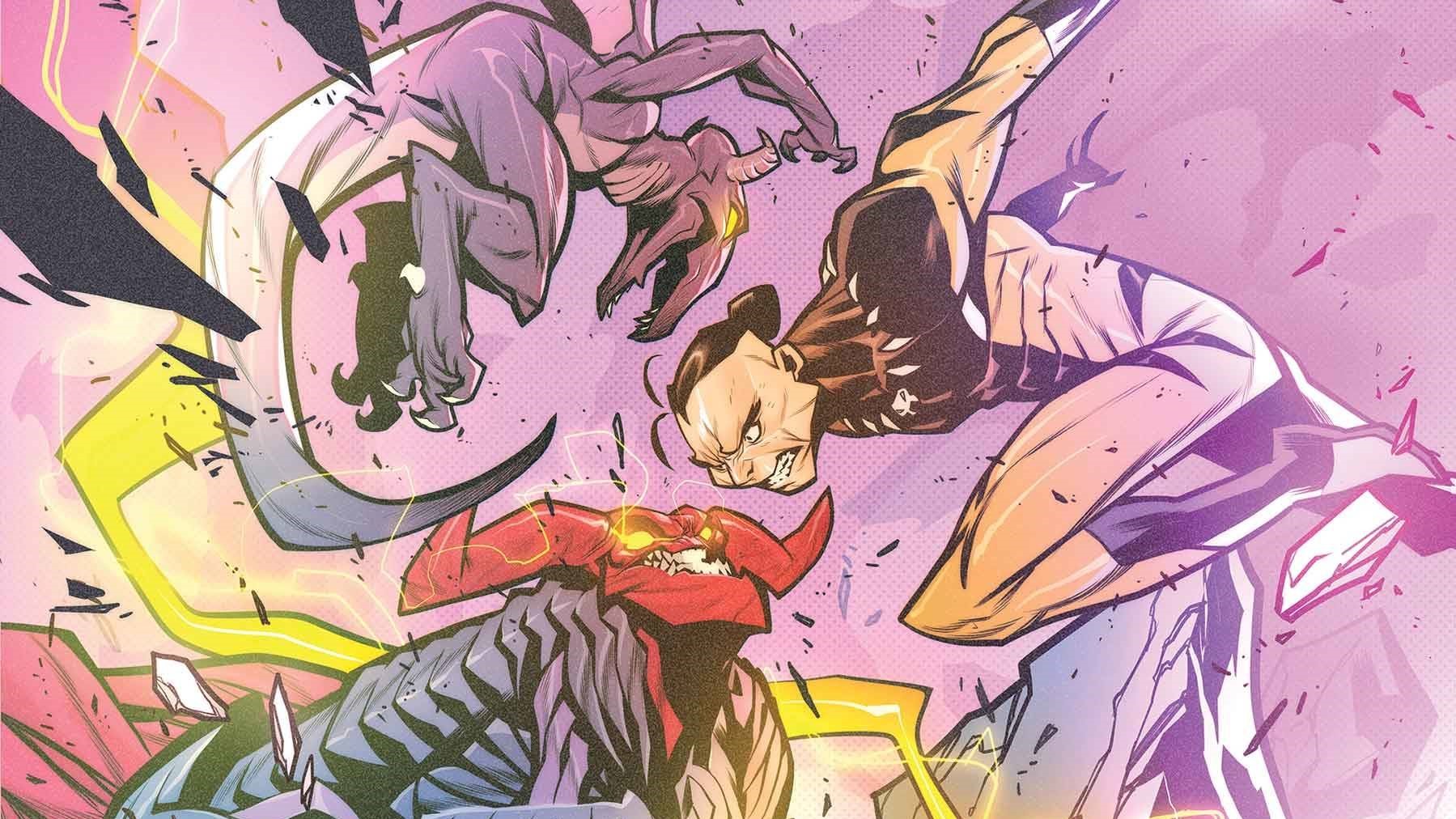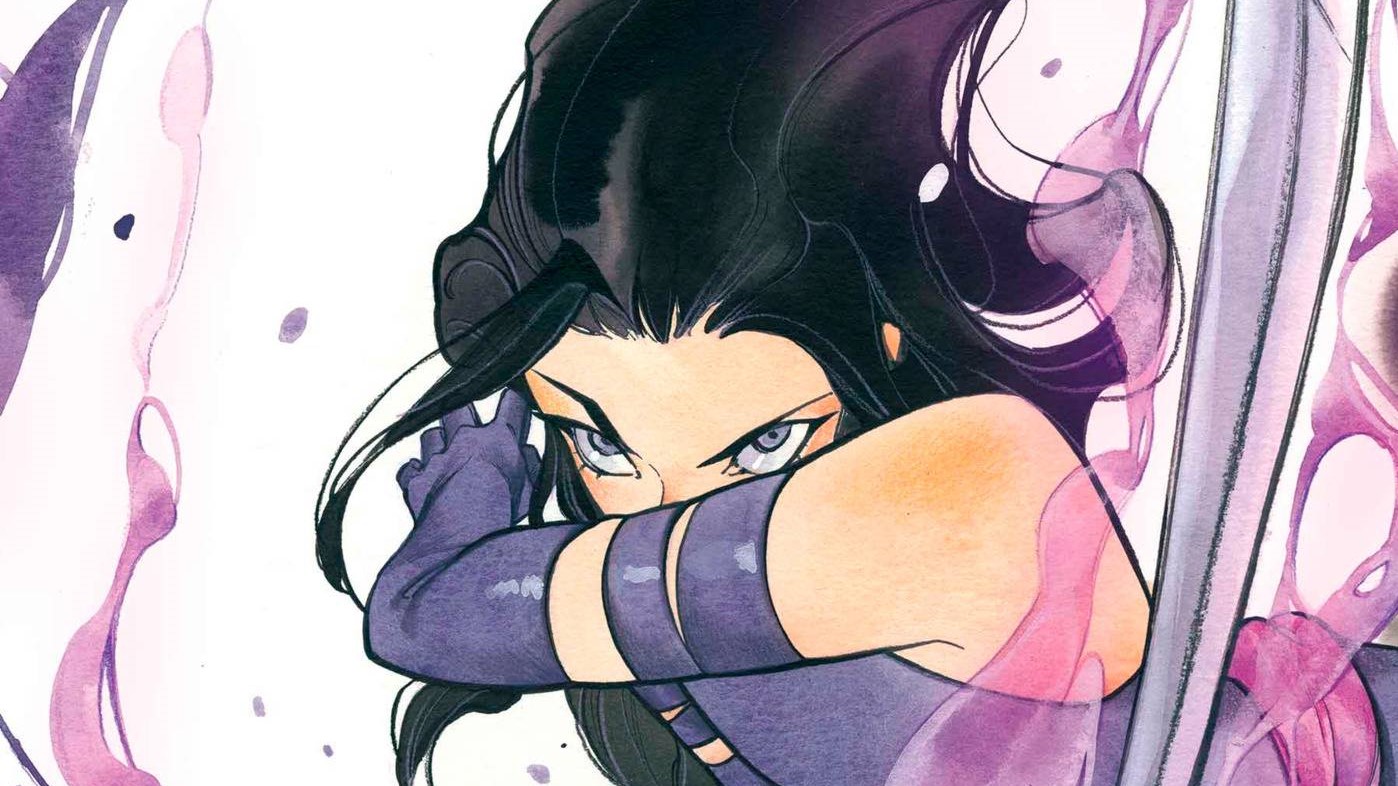Last time out in this Star Wars comic Marauders, our heroes sold a Macguffin to the dastardly double-crossing space criminal Eden Rixlo in exchange for his spaceship, and then he stole it back from them and shot them out the airlock. Can they come back from that? Marauders #25, writing by Gerry Duggan, art by Phil Noto, letters by Cory Petit.
Ian Gregory: Last week, our poor Marauders got jettisoned into space on their very first foray into space. Not an auspicious start, but I’m sure things will work out. Hi Stephanie!
Stephanie Burt: Hi Ian! This one was fun. But.
Roll for Initiative

Stephanie: I play several tabletop role-playing games now, both D&D and indie games, and one of the things I’ve noticed, thanks to Fiona Hopkins is how different systems encourage different kinds of play. D&D is built for combat and tactical problem-solving, not for emotional character development, though you can develop characters there if you want. Other systems, like Masks, are built to develop characters: usually, when you roll for something or focus on an event in a game of Masks, you’re seeing somebody’s feelings change.
This issue of Marauders— which appears to wrap up the Eden Rixlo/Arakko storyline– feels a lot like a session of D&D. Characters work together and learn to use their special powers to solve a series of tactical problems. They solve it and they beat the dangerous bad guy, and everyone goes home. Psychologically almost nothing happens, unless you count some pretty quiet hints about Kate’s developing badassery. She might be more willing to kill, and more interested in alcohol, than she used to be, though she does not in fact kill anyone. Ian, do you see anything else, for any other character?
Ian: In short, no. This entire issue is basically a single sequence. It’s a cool sequence, but the dialogue is essentially characters saying what they’re going to do next. I think the D&D analogy is spot on – they’re talking like players at a table, planning their next move. Marauders is an action-adventure superhero series for ages thirteen and up, so it’s not like this is a major tonal dissonance. But it does feel a bit like an empty issue because no one really makes any decisions other than “how do I survive.” More Hatchet than Call of the Wild. And while the Marauders are in a tight spot, they also don’t seem to be particularly challenged. No one has to dig deep to find the will to keep going, or work hard to solve a problem: as soon as an issue is identified, someone steps up to solve it. That’s not to say I didn’t like what’s happening here; in terms of choreography, this is a really cool scene.
Stephanie: On a pure adventure level, a ton of things happen! If you’ve ever wondered whether Iceman’s powers just condense ice from water vapor that’s already in the air (on the one hand) or generate ice from nowhere (on the other), maybe from an Ice Dimension (like Cyclops’s Punch Dimension),you can find your answer right here. Bobby creates enough ice to encase our space castaways in a sphere like the head of a comet (thus the title “Night of the Comet,” despite the absence of Valley Girls). Pyro melts some of the ice to create liquid water. Kate, who of course “paid attention in science class,” hits the water with an electric stun gun, making…. hydrogen and oxygen!
Once everybody can breathe, our heroes turn their attention to foiling Eden Rixlo and getting their spaceship back. It’s a job for somebody who can pass through solid objects, sneak up behind a bad guy and do ninja moves. Guess who fits that bill.
Ian: What I appreciate about how Duggan constructed this sequence is that it just uses our regular cast of characters. It would have been easy to cop out of this by having a different mutant come along with the Marauders, one whose powers would have been better suited to space, or would have trivialized space. Duggan clearly thought hard about how to use the regular Marauders cast members in an interesting and unique way, and he manages to have them all contribute something. As a bit of problem solving, it’s clever. That said, I’m not sure how much of it holds up to scrutiny.
Stephanie Burt: First they have get to Rixlo’s ship, which means they need a propulsion source. Not a problem, since both Sebastian Shaw and Bishop can absorb and reflect, uh, “energy.” Sebastian punches Bishop, Bishop fires energy blasts at Sebastian, Sebastian reflects them back and presumably amplifies them by punching again, they play a few more rounds of superhero energy ping-pong, and then they’re powered up enough to, and I am not making this up, fire “dude-thrusters” out the back of the comet-shell-lifeboat in order to propel everybody to Rixlo’s flying saucer.
She Blinded Me With Science

Stephanie: Meanwhile James Kakalios, author of the excellent volume The Physics of Superheroes, is over in the corner trying to figure out how to No-Prize this stuff into pretend superhero science sense. Energy bouncing back and forth between Bishop and Shaw should get diminished, not amplified. But if Shaw’s kinetic punch-people energy (which comes from his own biological metabolism) hits Bishop and Bishop turns it into energy blasts, maybe that works? Shaw’s gonna need a steak sandwich and a big bowl of pasta when he gets home. (And then Kate can kill him. Did we mention that her knuckle tats still read KILL SHAW?)
Ian: This is also the first thing I noticed. As they were passing energy back and forth, I was reminded of those troll science memes from 2010 (no comments, please). They’re essentially, between the two of them, generating infinite energy. If mutants can do that, why bother with all these life-saving drugs and instead just become the power company to the planet? Of course, that’s kind of been the point of Krakoan “mutant circuits:” mutants combining their powers to overcome old limitations. It’s easier to convince me that these mutant circuits work, though, when they involve five different mutants and a couple of data pages explaining the process. When Shaw and Bishop just start generating infinite power for laughs, my suspension of disbelief gets a little strained.
Now, if this issue took place outside of the Krakoa Era, I doubt I would have given much thought to the actual mechanics of mutant powers. The introduction of mutant circuits, though, incentivizes readers and writers to think a little harder about exactly how these powers can work together. That’s not to say a little scientific inaccuracy ruins this segment, but just that I’m much more sensitive to it now that we’re being asked to actively engage with the specifics of mutant powers. But, anyway, through Bishop’s secondary mutation (the power to ignore the Conservation of Energy), the Marauders turn their ice-ball around and head to Rixlo’s ship.
Stephanie: Then it’s Kate’s turn. We get several pages of Kate vs. Rixlo, and it’s not much of a fight: dude thinks he can threaten her with a knife. She’s got ninja training and she can phase. The outcome is never in doubt. Given what Kate’s been through lately it’s fun to just watch her beat a bad guy up.
A Line Was Drawn

Stephanie: I’m not sure Phil Noto’s the right artist for this part, when it becomes a de facto martial arts book: he’s better at cosmic weirdness and magic awesome powers than at kicking and punching. Ian, what do you think of the visuals here?
Ian: Noto’s fight scenes felt pretty static to me on Cable, too. The splash page of Kate flying through space at Rixlo’s ship is pretty great (including prominent necklace), and I especially like some of the expressions in this issue. But once Kate goes head to head with Rixlo, there’s nothing particularly exciting going on – this part feels a little perfunctory, even with Duggan’s callbacks to Ogun. Even with Noto’s signature SFX, I don’t get a good sense of motion from this fight. Part of it is the choreography – there’s a lot of standing still and exchanging blows – but I also think even something like some motion lines could help this sequence feel less stationary.
I’m also not thrilled by the layouts in this issue. Noto’s gone for a really tight grid, with lots of long horizontal panels. It does its job (showing all the characters standing around and talking) but doesn’t make the action feel particularly urgent. This, combined with how none of the characters seem particularly worried about their plight (or have to think very hard to come up with a solution), makes the problem solving seem a little boring. It’s a foregone conclusion that they’ll escape, so all the pleasure is in watching them explain the solution.
Lots of people have criticized the Krakoa Era for taking the stakes out of the X-Men (given that characters can die and come back in just a few pages), but I actually think Duggan could have played a little riskier with this scene. Instead of having our characters come up with a perfect solution, I would have liked a little more adversity. Any part of this plan could have easily gone wrong, and someone could have been lost in the void of space. Because characters can die without long-term consequences, even an unimportant issue like this can have some consequence. Sure, that character will come back next issue, but at least then we can see our characters understand that they’re in a dangerous situation, and have that affect their thought process.
Stephanie Burt: After the fight, the Marauders dump Rixlo on Arakko and Emma claims that only she, Emma, stopped Kate from killing him (which might even be true). Maybe Kate’s getting more ruthless? Or less lawful good? Life on the high seas will do that. I hope it’s not a larger heel turn for Kate, though. That’s…. not her. (Not even high heels.)
One more thing I like about this issue: not for the first time, Duggan shows that he knows Kate’s backstory very well. We remember not just that she has ninja training but when and how she received it (through Ogun’s brainwashing in the Kitty Pryde and Wolverine miniseries). And we might remember, if we’re obsessives or something, the last time Emma used her psychic link to talk Kate through a tough time in outer space: that would be the end of the Whedon run. I like this story better. Presumably Kate does too.
Ian: Last issue, we wondered about Emma and Rixlo’s relationship, and past dealings. We expected some sort of reveal to come about in this issue, but instead Rixlo just sort of leaves. I don’t need to know every single detail of their relationship, but he certainly could have gotten more characterization beyond “sort of like Han Solo.” It’s an open thread to revisit, sure, but I have a feeling Rixlo’s going to be out of the picture for a long time. Just felt like another area where this issue could have felt a little more personal, and a little less like a puzzle to solve.
I think that Marauders is at its best when the story focuses on Kate, and her character. Duggan clearly cares a lot about her, and knows his stuff. Her voice is stronger (“Maybe… I should stop going to space”) and she feels like a consistent, complex character rather than a powerset or joke (Iceman and Pyro, respectively). I think exploring how being on the Marauders has encouraged Kate’s most violent tendencies would be an interesting angle for the book. But, given the impending relaunch of the X-line following Inferno, I’m not so sure it’s going to matter.
X-Traneous Thoughts

- Kate got her nose broken. Again (see Marauders #1 for the first time). American Jewish girls from the suburbs… plastic surgery… noses… not sure I like where this one’s going, but at least she’s fighting for it.
- Emma and Kate make a lovely fighting team. So do Bishop and Shaw. Have they ever been on the same side in the same fight before?
- Kate seems to drain a green bottle of something alcoholic and then open another one on the next page, during and after the fight. At least she’s not driving.
- I’d like to see some more of Kate being smart. She went to the University of Chicago, you know!
- Krakoan reads: SEA DRAGON







